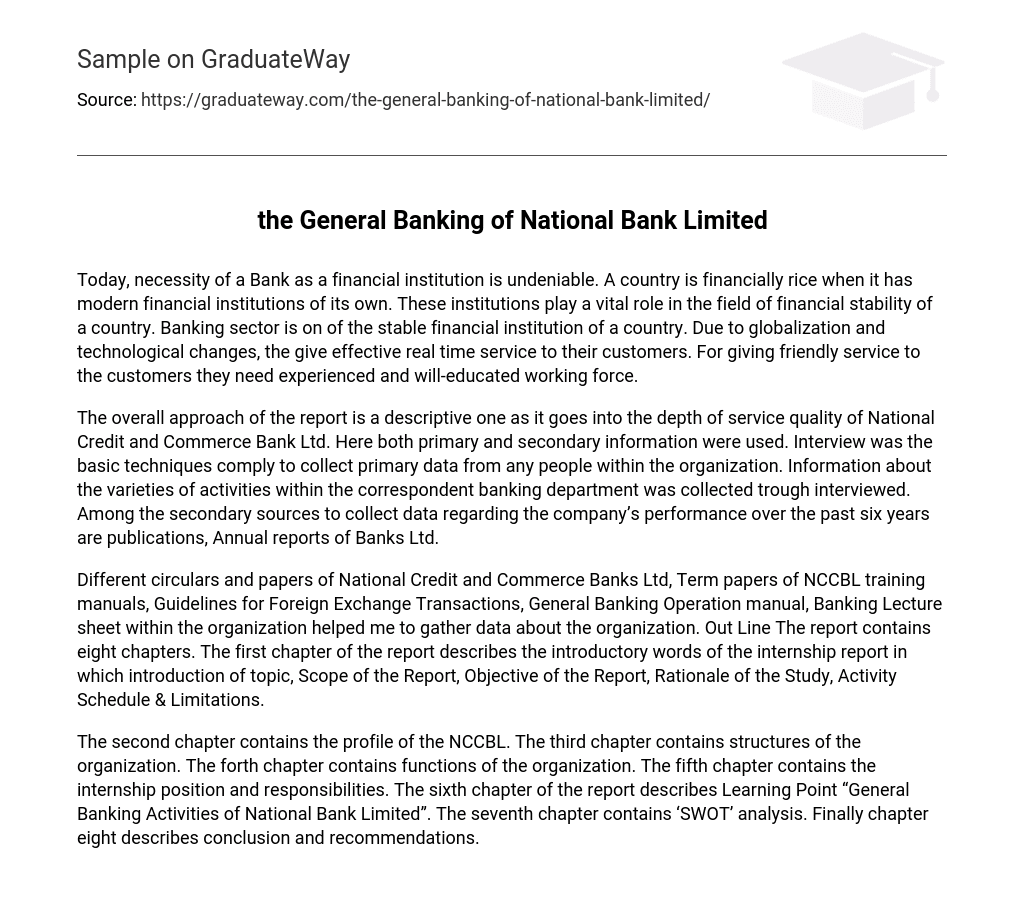Today, necessity of a Bank as a financial institution is undeniable. A country is financially rice when it has modern financial institutions of its own. These institutions play a vital role in the field of financial stability of a country. Banking sector is on of the stable financial institution of a country. Due to globalization and technological changes, the give effective real time service to their customers. For giving friendly service to the customers they need experienced and will-educated working force.
The overall approach of the report is a descriptive one as it goes into the depth of service quality of National Credit and Commerce Bank Ltd. Here both primary and secondary information were used. Interview was the basic techniques comply to collect primary data from any people within the organization. Information about the varieties of activities within the correspondent banking department was collected trough interviewed. Among the secondary sources to collect data regarding the company’s performance over the past six years are publications, Annual reports of Banks Ltd.
Different circulars and papers of National Credit and Commerce Banks Ltd, Term papers of NCCBL training manuals, Guidelines for Foreign Exchange Transactions, General Banking Operation manual, Banking Lecture sheet within the organization helped me to gather data about the organization. Out Line The report contains eight chapters. The first chapter of the report describes the introductory words of the internship report in which introduction of topic, Scope of the Report, Objective of the Report, Rationale of the Study, Activity Schedule & Limitations.
The second chapter contains the profile of the NCCBL. The third chapter contains structures of the organization. The forth chapter contains functions of the organization. The fifth chapter contains the internship position and responsibilities. The sixth chapter of the report describes Learning Point “General Banking Activities of National Bank Limited”. The seventh chapter contains ‘SWOT’ analysis. Finally chapter eight describes conclusion and recommendations.





